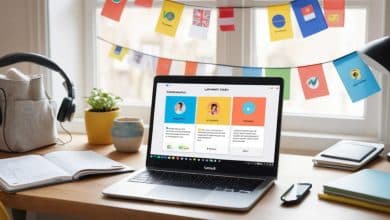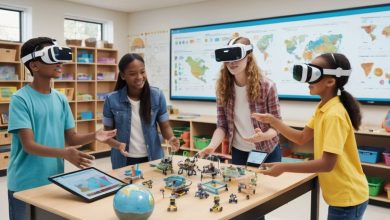Gamified Educational Resources to Increase Student Motivation
Keeping students engaged and motivated is an ongoing challenge for educators. Gamification—integrating game elements into learning—has emerged as a powerful way to spark interest, improve retention, and foster a positive classroom culture. In this article, you’ll discover top gamified educational resources, explore why gamification boosts motivation, examine practical case studies, and learn step-by-step how to implement game-based tools in your own classroom.
“The most effective gamified educational resources include platforms like Kahoot!, Classcraft, and Quizizz; interactive game-based math and science apps such as Prodigy and Mystery Science; and DIY gamification toolkits for creating badges, leaderboards, and progress quests that capture student interest.”
Why Gamification Boosts Student Motivation
Studies show that gamification can transform passive learners into active participants by tapping into natural human desires for achievement, competition, and collaboration. Key benefits include:
-
Clear Goals and Instant Feedback: Points, badges, and levels provide immediate indicators of success, helping students understand where they stand and what they need to improve.
-
Healthy Competition and Collaboration: Leaderboards and team quests encourage students to support one another while striving to outperform their personal bests.
-
Appeal to Multiple Learning Styles: Game mechanics—visual progress bars, auditory rewards, tactile manipulatives—engage visual, auditory, and kinesthetic learners alike.
-
Encouragement of Perseverance: Challenges that adjust difficulty prevent frustration, keeping students in a “flow” state where they remain motivated to tackle the next level.
-
Intrinsic Motivation: By framing lessons as quests or puzzles, gamification shifts the emphasis from grades to mastery, fostering a love of learning beyond external rewards.
Categories of Gamified Educational Resources
Hosted Game-Based Learning Platforms
-
Kahoot!
A live, student-paced quiz platform where teachers create multiple-choice questions. Students join games using a code and compete on a leaderboard. Kahoot!’s colorful interface and time-based scoring make review sessions energetic and interactive. -
Quizizz
Similar to Kahoot!, Quizizz allows for both synchronous and asynchronous quizzes. Teachers can add memes as feedback for correct or incorrect answers. Detailed analytics help identify knowledge gaps, and voice or image questions support diverse learners. -
Blooket
Blooket transforms question banks into various game modes—Tower Defense, Racing, Café, and more. Students answer questions to earn in-game rewards, making review sessions feel like mini-adventures. Customization options let educators tailor games to any subject.
Subject-Specific Gamified Apps
-
Prodigy (Math)
An adaptive math platform disguised as a fantasy role-playing game. Students embark on math quests, battling characters by solving problems aligned with grade-level standards. Prodigy’s algorithm adjusts difficulty in real time, ensuring each student works at an appropriate level. -
Mystery Science (Science)
Mystery Science offers short, interactive “mysteries” where students investigate real-world phenomena. Through guided experiments and digital simulations, learners develop critical thinking skills while enjoying an investigative game-like structure. -
Duolingo (Languages)
Duolingo gamifies language learning with points, streaks, hearts, and leveling up. Bite-sized lessons let students practice vocabulary, grammar, and pronunciation in under 10 minutes per session, making daily language practice feel rewarding.
Classroom Management & Gamification Frameworks
-
Classcraft
Classcraft turns classroom behavior and assignments into a role-playing game. Students create avatars, earn experience points for positive behaviors, and complete cooperative quests. Teachers can assign “health points” lost for off-task behavior, promoting accountability and teamwork. -
Seesaw Badges & Achievements
Seesaw allows teachers to award digital badges for skills mastery, creativity, or consistent effort. Students build a digital portfolio that showcases their work, and badges serve as micro-credentials that motivate continued practice. -
GooseChase (Scavenger Hunts)
GooseChase lets educators design custom scavenger hunts that blend academic tasks with real-world exploration. Students use smartphones or tablets to complete missions—taking photos, answering questions, or recording short videos—promoting active engagement beyond the classroom.
DIY Gamification Toolkits
-
BadgeOS (WordPress Plugin)
BadgeOS enables educators to create and award digital badges on a WordPress site. Assign badges for completing modules, participating in discussions, or achieving mastery levels. Integration with forums and learning management systems streamlines reward distribution. -
Google Forms + Flubaroo + Autocrat
Combine Google Forms for quizzes, Flubaroo to auto-grade responses, and Autocrat to generate personalized badge certificates. When a student achieves a set score threshold, a custom certificate is emailed automatically, celebrating their accomplishment. -
Class Dojo Points System
Class Dojo offers a free points system where teachers award or deduct points for behavior, participation, and mastery. Real-time class points are projected on a shared screen, and parents receive updates through the app, reinforcing positive behaviors at home.
Traditional vs. Gamified Resources
| Feature | Traditional Method | Gamified Resource |
|---|---|---|
| Student Engagement | Lecture-based or worksheet-driven | Interactive points, badges, leaderboards, immediate feedback |
| Feedback Speed | End-of-unit tests, graded assignments | Instant feedback through game mechanics, real-time scoring |
| Reward System | Grades or verbal praise | Points, levels, badges, virtual rewards |
| Collaboration & Competition | Group projects, classroom recitation | Team quests, live quiz battles, class-wide competitions |
| Adaptivity | One-size-fits-all pacing | Adaptive difficulty (e.g., Prodigy’s leveling system) |
| Intrinsic Motivation | Emphasizes grades and external rewards | Encourages mastery, curiosity, and “flow” with game elements |
Pros & Cons
-
Traditional Resources
-
Pros: Familiar structure, minimal technology requirements, straightforward lesson planning.
-
Cons: Limited engagement, delayed feedback, less personalized pacing.
-
-
Gamified Resources
-
Pros: Increases participation, delivers immediate feedback, offers scaffolded challenges, appeals to diverse learners.
-
Cons: Requires time for setup and training, potential over-reliance on screen time, needs reliable internet access.
-
Effective Gamification in Classrooms
Elementary School Uses Prodigy & Badge Systems
-
Context: A 4th-grade class struggled with math fluency, resulting in low confidence and classroom participation.
-
Resources Used:
-
Prodigy: Daily math quests aligned with state standards, allowing students to practice multiplication and division in a fantasy game world.
-
BadgeOS: Printable badges awarded when students completed weekly Prodigy quests with 90% accuracy.
-
-
Outcome:
-
Math Fluency Improvement: Assessment data showed a 25% increase in math fact fluency over six weeks.
-
Attendance and Engagement: Student attendance rose by 15% as learners became motivated by quest completion and badge rewards.
-
Middle School Implements Kahoot! & Classcraft
-
Context: A 7th-grade social studies department wanted to boost participation and homework completion rates.
-
Resources Used:
-
Kahoot!: In-class quizzes to recap historical events, using colorful visuals and a dynamic leaderboard to spark friendly competition.
-
Classcraft: Points awarded for on-time homework, active discussion contributions, and demonstrating teamwork. Classcraft’s team-based quests fostered collaboration across different ability levels.
-
-
Outcome:
-
Class Participation: In-class discussion participation increased by 40%.
-
Homework Completion: Homework completion rates improved by 30% as students competed for team points and individual rewards.
-
High School Blends DIY Badges & GooseChase Hunts
-
Context: A high school Spanish teacher sought to provide authentic practice opportunities outside of class.
-
Resources Used:
-
Google Forms + Flubaroo: Vocabulary quizzes that auto-graduated students to earn digital “Fluency Badges” when they scored above 85%.
-
GooseChase: A city-wide Spanish scavenger hunt where students completed tasks—ordering food in Spanish at a local café, recording a neighborhood tour in Spanish—earning points and completing missions.
-
-
Outcome:
-
Vocabulary Retention: Post-hunt quizzes showed a 20% increase in vocabulary retention scores.
-
Student Feedback: A post-activity survey revealed that 90% of students enjoyed authentic, game-based language practice, increasing their confidence in speaking outside the classroom.
-
Implementing Gamified Resources
-
Identify Learning Objectives & Game Mechanics
-
Define clear goals (e.g., “Master multiplication facts by end of month,” “Increase weekly class discussion participation by 50%”).
-
Select game mechanics that align with those objectives: assign points for correct answers, award badges for milestones, and create leaderboards for friendly competition.
-
-
Select Suitable Platforms & Tools
-
Hosted Platforms:
-
Register on Kahoot! to create live quizzes.
-
Set up a Classcraft classroom to track student behavior, assign quests, and award team points.
-
-
Subject-Specific Apps:
-
Create student accounts on Prodigy (math) or Duolingo (language) and assign daily practice quests.
-
-
DIY Tools:
-
Install BadgeOS on your class website or configure Google Forms + Flubaroo to auto-generate badge certificates.
-
Set up a Class Dojo points system to award or deduct points for behavior and academic tasks.
-
-
-
Design Gamified Lesson Plans
-
Warm-Up (5 minutes): Use a Kahoot! quiz to review the previous day’s content with a live, timed competition.
-
Core Activity (20 minutes): Have students complete Prodigy math quests in small groups, monitoring their mastery levels via the teacher dashboard.
-
Badge & Reward (5 minutes): Award digital badges through BadgeOS or announce Classcraft team standings, recognizing top performers and reinforcing goals.
-
-
Set Up Tracking & Feedback Systems
-
Leaderboards: Project Classcraft or Kahoot! scores on a classroom screen to motivate participation.
-
Progress Dashboards: Use Prodigy’s teacher analytics to monitor which skills students struggle with, adjusting instruction accordingly.
-
Automated Feedback: Configure Flubaroo to email quiz results and badge certificates directly to students upon meeting achievement thresholds.
-
-
Train Educators & Students
-
Educator Workshop (1 hour):
-
Demonstrate how to create and launch quizzes on Kahoot!.
-
Show teachers how to configure Classcraft rules—setting point values, defining quests, and assigning health bars.
-
Walk through BadgeOS badge creation and distribution, and explain Google Forms + Flubaroo setup for automated certificates.
-
-
Student Orientation (30 minutes):
-
Introduce key game mechanics: how to earn points, redeem badges, and navigate leaderboards.
-
Conduct a brief practice session—run a mock Kahoot! quiz and assign a mini Classcraft quest to ensure everyone understands the process.
-
-
-
Pilot & Refine
-
Pilot Period (2–3 weeks): Introduce gamified elements in one class or unit. Track engagement metrics—quiz participation, quest completion rates, and badge counts.
-
Gather Feedback: Distribute a short survey to students and teachers asking about usability, motivation, and technical issues.
-
Adjust: If students find certain game mechanics confusing or overly time-consuming, modify point values, simplify badge requirements, or adjust question difficulty to keep tasks engaging yet achievable.
-
-
Scale & Sustain
-
Expand to Additional Classes: Once the pilot demonstrates positive outcomes—higher engagement and improved scores—roll out gamification tools to other grades or subjects.
-
Monitor Key Metrics Ongoing:
-
Student Engagement: Track weekly participation rates in gamified activities—target ≥80% consistent involvement.
-
Academic Improvement: Compare pre- and post-implementation assessment scores—aim for 15–20% gains in targeted skills.
-
Behavioral Indicators: Observe increases in class participation and decreases in off-task behavior—set goals like a 25% reduction in interruptions.
-
-
Iterate Quarterly: Review platform usage data, solicit ongoing feedback, and introduce fresh challenges or seasonal events—such as holiday-themed quests—to maintain novelty and excitement.
-
Metrics to Monitor for Gamification Success
-
Student Engagement Rate
-
Measure the percentage of enrolled students actively participating in gamified activities each week—aim for ≥80% consistent participation.
-
-
Assessment Performance Gains
-
Compare quiz and test scores before and after implementing gamified resources—target a 15–20% improvement in areas like math fluency or vocabulary retention.
-
-
Badge & Level Progress
-
Track the number of badges earned and levels achieved per student—identify those who may need extra support or additional challenges.
-
-
Behavioral & Attendance Metrics
-
Monitor class participation rates (comments, questions asked) and attendance—look for a 30% increase in voluntary engagement and improved attendance consistency.
-
-
Teacher & Student Satisfaction
-
Conduct short, anonymous surveys rating platform usability and motivational impact—strive for an average satisfaction score of 4 out of 5 or higher.
-
FAQs
What are the best free gamified learning platforms?
Answer:
Kahoot! offers a robust free tier for live quizzes with up to 10 players per game, while Quizizz allows asynchronous quizzes at no cost. Prodigy provides a completely free math platform for grades 1–8, using adaptive quests aligned to curriculum standards.
How do I balance gamification with learning objectives?
Begin by defining specific learning goals—for example, “Students will master 9× multiplication by the end of the month.” Choose game mechanics that support these goals: assign points for correct multiplication answers, award badges when students reach a specified accuracy threshold, and display leaderboards to encourage daily practice.
Are there age-appropriate gamification tools for younger students?
Yes. Prodigy uses a child-friendly fantasy theme suitable for elementary grades, while Blooket offers simple game modes like “Tower Defense” and “Racing” that work well for grades 3–5. For early literacy, platforms like Starfall provide interactive phonics games ideal for K–2 learners.
How much time does it take to set up a gamified lesson?
Initial setup—such as creating a Kahoot! quiz or configuring Classcraft rules—may take 30–60 minutes. Once templates and question banks are established, subsequent gamified lessons can be prepared in 15–20 minutes by reusing existing content and adjusting difficulty levels.
Can gamification improve test scores, or does it only boost engagement?
Research shows gamification impacts both engagement and learning outcomes. For instance, classes using Prodigy often see a 15–20% increase in math test scores, while Kahoot! quizzes enhance retention of key concepts through spaced repetition and immediate feedback.
Conclusion
Gamification isn’t just a trendy buzzword—it’s a research-backed strategy that can dramatically improve student motivation, participation, and academic performance. By leveraging hosted platforms like Kahoot!, Quizizz, and Prodigy, along with DIY tools like BadgeOS and Google Forms+Flubaroo, educators can transform ordinary lessons into exciting, game-like experiences. Follow the step-by-step tutorial—identify objectives, choose appropriate platforms, design engaging lesson plans, train stakeholders, pilot your approach, and monitor key metrics—to implement gamified resources effectively. With thoughtful execution and ongoing refinement, you can cultivate a learning environment where students eagerly tackle challenges, celebrate milestones, and develop a lifelong love of learning.
Published on: 4 de June de 2025








